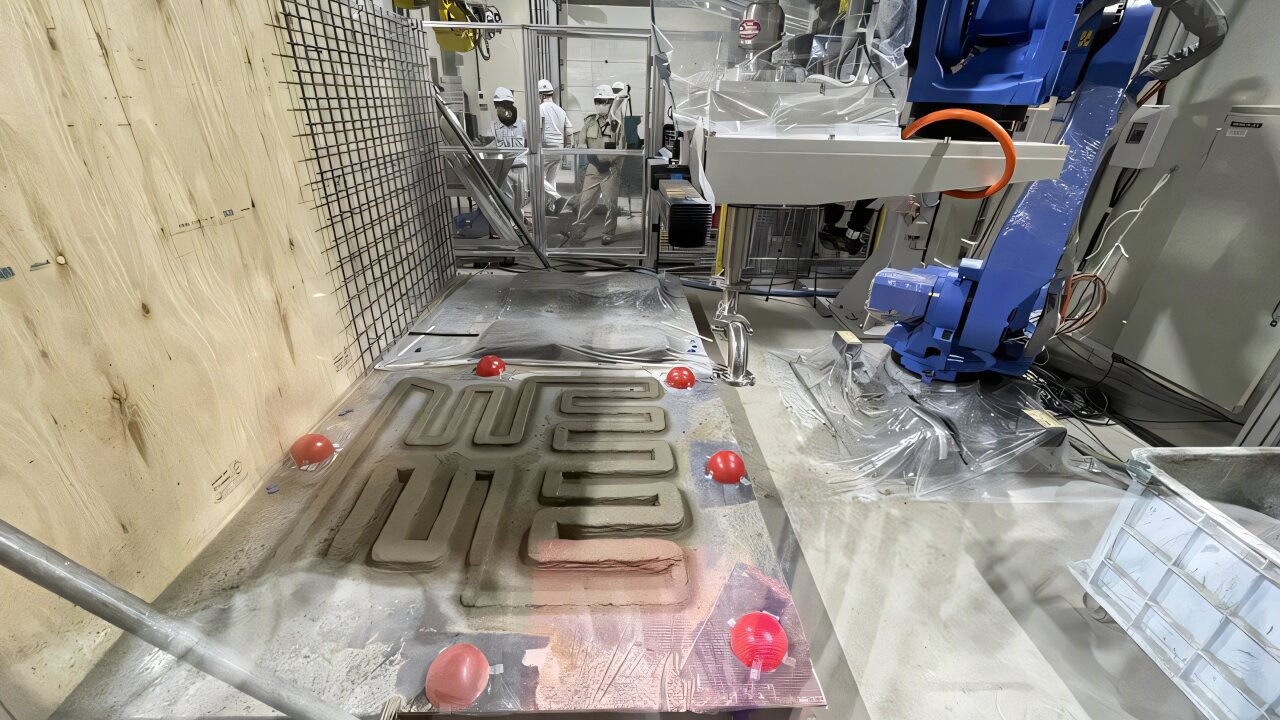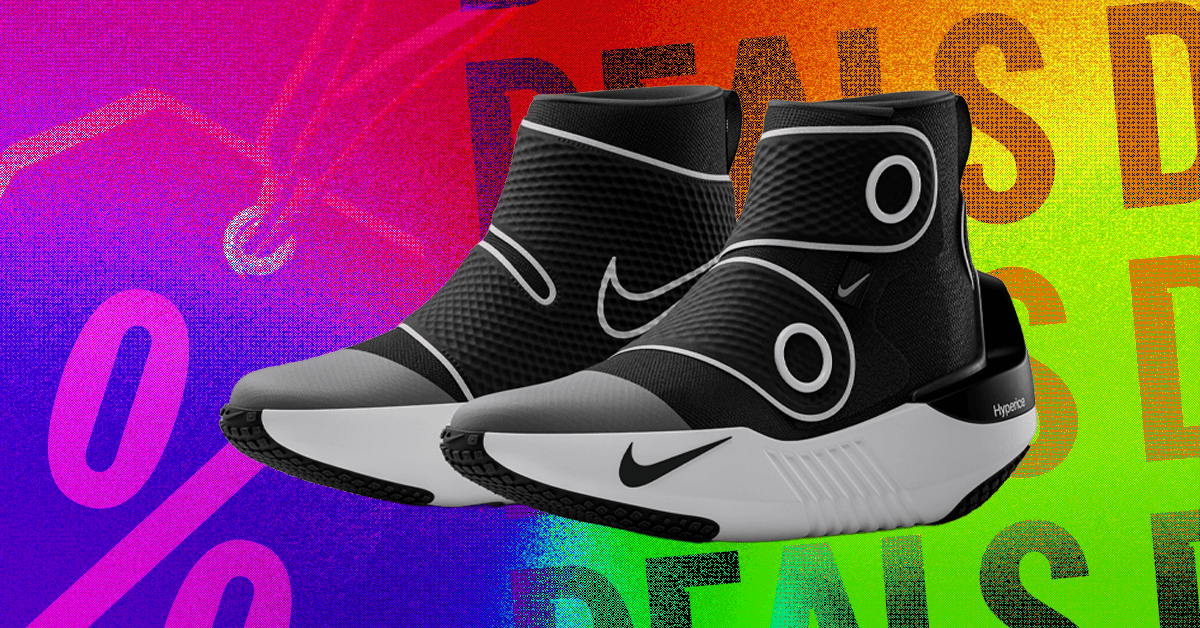Tech
AI infrastucture provider Nscale secures $1.1bn in series B funding | Computer Weekly

Artificial intelligence (AI) infrastructure provider Nscale has secured $1.1bn in series B funding, a week after it was announced the firm would be working with the UK government to deploy the UK’s largest graphics processing unit (GPU) cluster.
The company claims it is the largest Series B funding round ever secured in the UK and Europe. It was led by Norwegian industrial investment company Aker ASA, with support from the firm’s existing shareholders, and tech firms Nokia and NVIDIA.
Nscale, which has a UK headquarters, was incorporated in May 2024 after being spun out of Australian crypto-mining infrastructure provider, Arkon Energy.
As previously reported by Computer Weekly, the majority of its directors are located overseas, and it announced plans to open a UK datacentre in Loughton, Essex, by late 2026.
Earlier this month, the company announced a technology tie-up with software giant Microsoft that would see the pair collaborate to create the UK’s largest supercomputer at its site in Loughton.
At present, its largest infrastructure investment appears to be in Norway, while Arkon Energy is known to have operated out of datacentres in Ohio in the United States.
The company said it plans to use the investment to accelerate the deployment of Nscale’s large-scale AI infrastructure across Europe, North America and the Middle East. This is in support of its involvement in projects such as OpenAI’s bid to build sovereign AI compute capacity in Norway and the UK through its respective Stargate Norway and UK initiatives. According to Nscale, Stargate Norway is targeting the deployment of 100,000 NVIDIA GPUs by the end of 2026.
Nscale said the funding will also be used to expand the size of its engineering and operations teams, in support of its plans to grow its customer base within the enterprise and government sectors worldwide.
Josh Payne, CEO of Nscale, said: “We are creating one of the largest global platforms of its kind – purpose-built to meet surging demand and unlock breakthroughs at unprecedented scale.
“This allows Nscale to provide our customers access to scarce, and highly sought after, compute capacity and rapidly accelerate the build-out of secure, compliant and energy-efficient AI infrastructure. Europe needs a hyperscaler, and Nscale is rising to the challenge.”
Øyvind Eriksen, president and CEO at Aker ASA, added: “The scale and quality of this Series B round are a testament to Nscale’s vision and momentum – and to the strength of our collaboration.”
Since the launch of the government’s AI opportunities action plan policy paper in January 2025, Nscale has been name-checked in ministerial speeches and press releases from the Department for Science, Innovation and Technology (DSIT).
Kanishka Narayan, the UK’s AI minister, said the company is playing an important role in helping the government achieve its aim of positioning the UK as an AI superpower.
“The success of UK-founded companies like Nscale shows how our country can be at the cutting edge of AI,” said Narayan. “By attracting global expertise and investment, it is building the essential infrastructure for the UK to compete internationally, drive growth and create jobs across the country.”
Tech
New algorithm enhances Doppler resolution of unmanned vehicle radars

A research team has developed an extrapolation-based Doppler resolution enhancement algorithm for frequency modulated continuous wave radars. The algorithm improves system performance, offering an advancement that is superior to existing ultra-high-resolution technologies.
The findings are published in the Journal of Electrical Engineering & Technology. The team was led by Sang-dong Kim and Bong-seok Kim, affiliated with the DGIST Division of Mobility Technology, in collaboration with a team led by Professor Youngdoo Choi, affiliated with the Republic of Korea Naval Academy (ROKNA).
Improving radar accuracy without extra hardware
This research introduces a technology that improves radar detection accuracy without the need for additional complex computations or hardware. The technology is expected to contribute to enhancing radar system performance on various intelligent unmanned platforms such as unmanned aerial vehicles (UAVs), unmanned ships, and autonomous vehicles.
Conventional radar systems analyze the Doppler effect to determine the velocity of a target, but the fast Fourier transform (FFT)-based approach has limitations regarding resolution (i.e., the accuracy of velocity discrimination). To address this, the joint DGIST–ROKNA research team applied a signal extrapolation technique and has proposed a new algorithm that enhances Doppler resolution without extending observation time.
Performance gains and real-world applications
The proposed method successfully reduces the root mean square error of velocity estimation by up to 33% and decreases the target miss rate by up to 68%, representing a substantial improvement over the conventional approach. Notably, the proposed method maintains the same computational complexity level as the conventional FFT method, thereby simultaneously achieving fast processing speed and high efficiency.
This technology can effectively solve the problem of signal overlap between targets moving at similar velocities, particularly when UAVs or radar systems detect multiple objects simultaneously. It can therefore greatly enhance the ability to distinguish closely spaced targets and improve detection accuracy, marking a new milestone in the advancement of high-resolution target detection technology.
Additionally, the technology is highly regarded for its industrial applicability because it requires no additional hardware resources and features a simple computational structure that enables real-time implementation.
Sang-dong Kim, principal researcher at the Division of Mobility Technology (concurrently serving the interdisciplinary engineering major), said, “This study demonstrates an improvement in both the efficiency and precision of radar signal processing, enabling more accurate target detection without the need for additional equipment. It is expected to evolve into a key technology for defense, autonomous driving, and unmanned systems.”
More information:
Youngdoo Choi et al, Doppler Resolution Enhancement Algorithm Based on Extrapolation for FMCW Radar, Journal of Electrical Engineering & Technology (2025). DOI: 10.1007/s42835-025-02453-6
Citation:
New algorithm enhances Doppler resolution of unmanned vehicle radars (2025, November 11)
retrieved 11 November 2025
from https://techxplore.com/news/2025-11-algorithm-doppler-resolution-unmanned-vehicle.html
This document is subject to copyright. Apart from any fair dealing for the purpose of private study or research, no
part may be reproduced without the written permission. The content is provided for information purposes only.
Tech
Spray 3D concrete printing simulator boosts strength and design

Concrete 3D printing reduces both time and cost by eliminating traditional formwork, the temporary mold for casting. Yet most of today’s systems rely on extrusion-based methods, which deposit material very close to a nozzle layer by layer. This makes it impossible to print around reinforcement bars (rebars) without risk of collision, limiting both design flexibility and structural integrity of builds.
Kenji Shimada and researchers in his Carnegie Mellon University’s Computational Engineering and Robotics Laboratory (CERLAB), are breaking through that limitation with a new simulation tool for spray-based concrete 3D printing.
“Spray-based concrete 3D printing is a new process with complicated physical phenomena,” said Shimada, a professor of mechanical engineering. “In this method, a modified shotcrete mixture is sprayed from a nozzle to build up on a surface, even around rebar.”
The ability to print freely around reinforcement is especially important in places like Japan and California, where earthquakes are an imminent threat and structural strength is critical.
“To make this technology viable, we must be able to predict exactly how the concrete will spray and dry into the final shape,” Shimada explained. “That’s why we developed a simulator for concrete spray 3D printing.”
The new simulator can model the viscoelastic behaviors of shotcrete mixtures, including drip, particle rebound, spread, and solidification time. This way, contractors can assess multiple printing paths based on a CAD design with the simulator to evaluate whether spray 3D printing is a feasible fabrication technique for their structure.
The team traveled to Tokyo, Japan, where Shimizu Corporation already operates spray 3D printing robots to validate their model. In the first test, the team focused on the simulator’s ability to predict shape based on the speed of the nozzle’s movement. With 90.75% accuracy, the simulator could predict the height of the sprayed concrete. The second test showed that the simulator could predict printing over rebar with 92.3% and 97.9% accuracy for width and thickness, respectively.
According to Soji Yamakawa, a research scientist in Shimada’s lab and the lead author of the team’s research paper published in IEEE Robotics and Automation Letters, a simulation of this kind would typically take hours, if not days, to run.
“By making wild assumptions, we were able to successfully simplify a super complex physics simulation into a combination of efficient algorithms and data structures and still achieved highly realistic output,” Yamakawa said.
Future work will aim to increase accuracy by identifying environmental parameters like humidity, optimizing performance, and adding plastering simulation to create smoother finished products.
“There are still so many applications and technologies that we can develop with robotics,” said Kyshalee Vazquez-Santiago, a co-author of the paper and a mechanical engineering Ph.D. candidate leading the Mobile Manipulators research group within CERLAB.
“Even in concrete 3D printing, we are working with an entirely new type of application and approach that has so many advantages but leaves so much room for further development.”
More information:
Soji Yamakawa et al, Concrete Spray 3D Printing Simulator for Nozzle Trajectory Planning, IEEE Robotics and Automation Letters (2025). DOI: 10.1109/lra.2025.3615038
Citation:
Spray 3D concrete printing simulator boosts strength and design (2025, November 11)
retrieved 11 November 2025
from https://techxplore.com/news/2025-11-spray-3d-concrete-simulator-boosts.html
This document is subject to copyright. Apart from any fair dealing for the purpose of private study or research, no
part may be reproduced without the written permission. The content is provided for information purposes only.
Tech
The Nike x Hyperice Hyperboot Is $200 Off

For the first time, the Nike x Hyperice Hyperboot is on sale. The recovery boots are $200 off—normally $899, now $699—through December 1. They’re also HSA/FSA eligible. Normally, I’d point you toward the Normatec 3 Legs; they cost the same and offer more leg coverage, but at this discounted price, the Hyperice Hyperboot’s portability and comfort are a hard deal to pass up.
The discount is part of Hyperice’s Black Friday sale, which runs from November 20 to December 1. Stay tuned, as we’ll be tracking all the best Hyperice holiday deals as they roll out.
Hyperice’s Normatec recovery boots are a favorite among athletes, but their one downside is that you have to stay put while using them. The Hyperboots pack the same air compression tech as the Normatecs, but in a wearable, high-top design, courtesy of Nike. You can get a foot massage while you do the dishes.
Each boot offer three levels of compression and heat (up to 125 degrees Fahrenheit), adjustable via a built-in control panel. The two sync automatically when worn together, and battery life is about 90 minutes per charge. They’re IP54 rated, meaning they’re dust- and splash-resistant, but not waterproof.
Reviewer Kristin Canning tested the boots on her drive back home after a day of snowboarding and said it was a game changer. She could flush out lactic acid and thaw her toes before she even got home. While they’re recovery boots, they do have a warmup mode that makes them just as useful before workouts to get your blood flowing.
Canning did point out that the air pumps make an airplane-like hum, but it’s nothing too overwhelming. If you’ve already bought your season pass and are doing your one-leg squats and hip rotations, there’s no better time to grab a pair of the boots that will keep your legs fresh all the way through March.
Power up with unlimited access to WIRED. Get best-in-class reporting and exclusive subscriber content that’s too important to ignore. Subscribe Today.
-

 Tech1 week ago
Tech1 week agoCISOs in court: Balancing cyber resilience and legal accountability | Computer Weekly
-

 Fashion1 week ago
Fashion1 week agoCoach reconnects with Bank & Vogue for upcycled bags using corduroy
-

 Fashion1 week ago
Fashion1 week agoGermany’s Adidas achieves highest-ever quarterly sales in Q3 2025
-

 Business1 week ago
Business1 week agoFirst new Amazon electric heavy goods vehicles hit UK roads
-

 Sports1 week ago
Sports1 week agoNFL broadcaster Cris Collinsworth makes government shutdown joke as Seahawks clobber Commanders
-

 Tech1 week ago
Tech1 week agoThe Security Interviews: Colin Mahony, CEO, Recorded Future | Computer Weekly
-

 Sports1 week ago
Sports1 week agoSources: QB Daniels dislocated elbow in loss
-

 Entertainment1 week ago
Entertainment1 week agoPSX rises on IMF tranche hopes, earnings momentum









